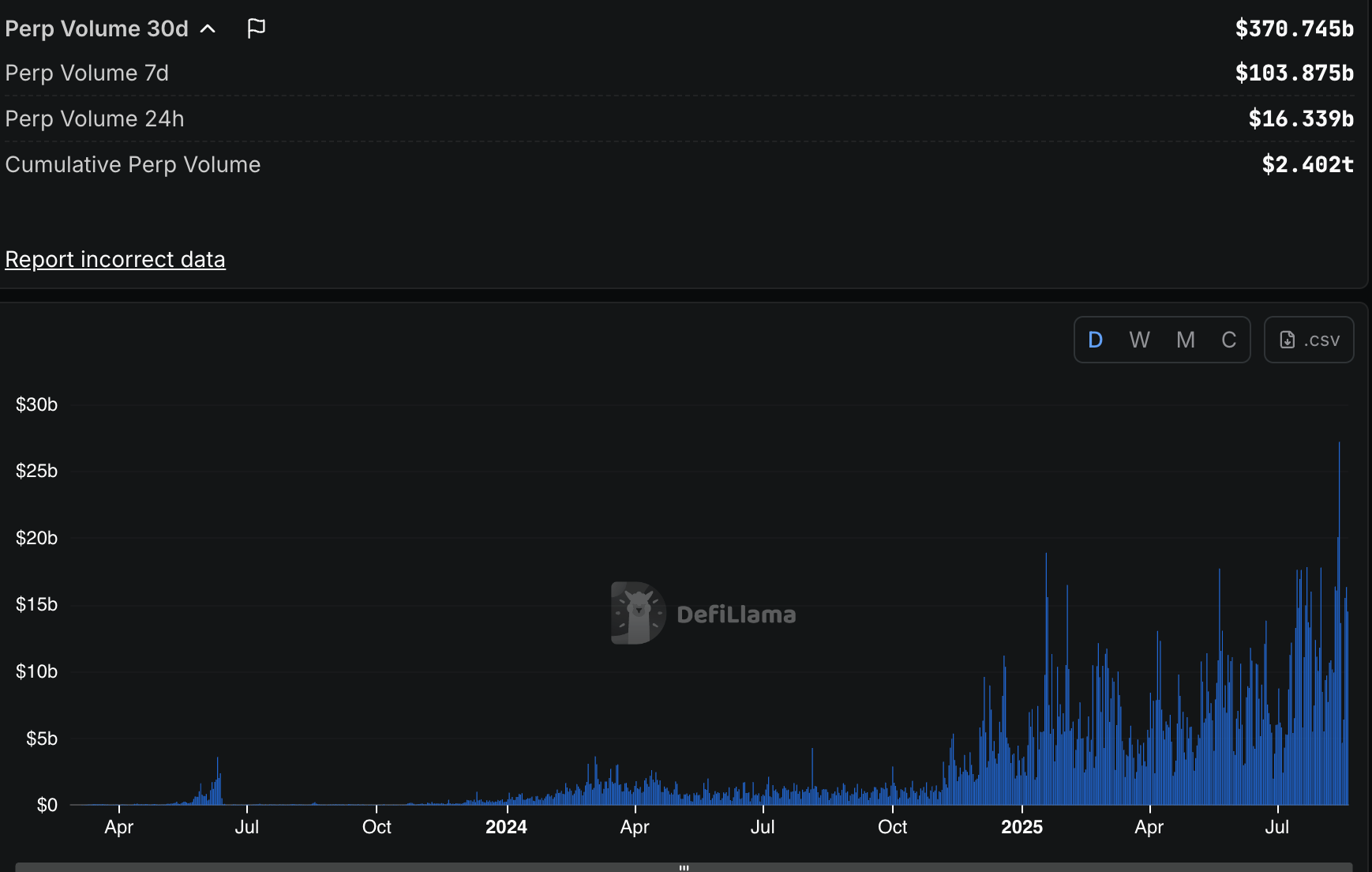Data provider RedStone has released a new report on Hyperliquid, the decentralized perpetuals exchange that has quickly become the category leader.
In just a year, Hyperliquid has grown to capture more than 80% of the decentralized perps market, with daily trading volumes now topping $30 billion, rivaling some of the largest centralized exchanges, according to the report.
RedStone highlighted three structural advantages that underpin Hyperliquid’s surge.
The first is its fully on-chain order book that now delivers spreads and execution speeds on par with centralized platforms.
Second, HIP-3, Hyperliquid’s new permissionless market creation framework, has created one of the most active builder ecosystems in DeFi, with revenue-sharing economics that pay developers more than the protocol itself.
And third, its dual architecture of HyperCore and HyperEVM enables entirely new financial primitives, including tokenized perp positions, delta-neutral strategies, and novel liquidity engineering tools.

Hyperliquid’s rise is an indication of how a lean, self-funded team can outcompete venture-backed peers by focusing on technical execution and builder-first incentives. By coupling CEX-level performance with permissionless technology, Hyperliquid is positioning itself not just as a trading venue but as a potential backbone for the next phase of on-chain trading.
The Hyperliquid network, on which the Hyperliquid DEX is based, currently has around $2.2 billion in total value locked, with the DEX notching $330 billion in cumulative trading volume in the past 30 days, according to DefiLlama.
“Hyperliquid is setting a new standard,” the RedStone report notes, arguing that the platform’s dual-layer design and community-driven growth model are creating “unprecedented opportunities for builders and institutions alike.”
